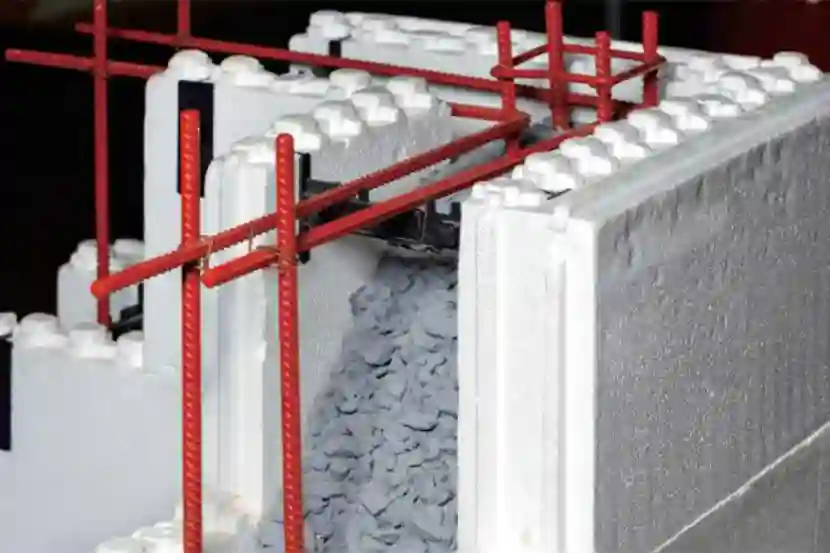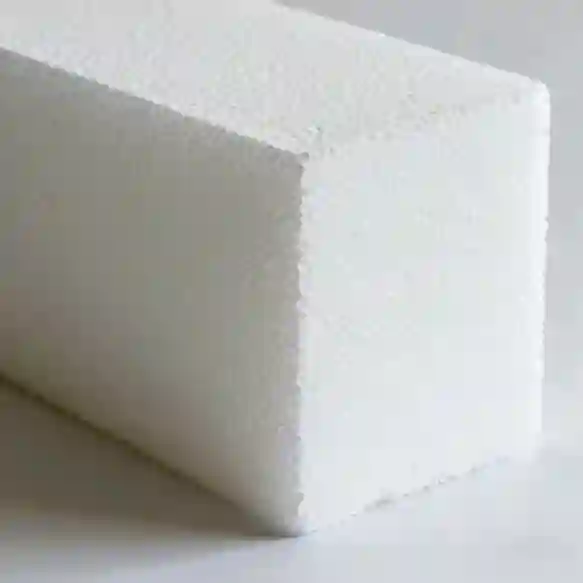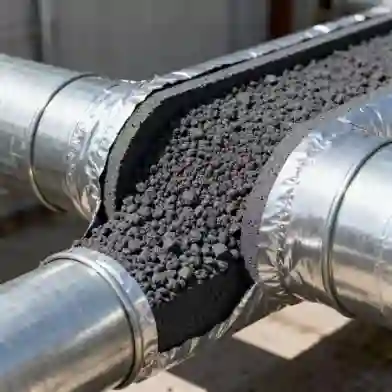The process of cutting EPS sheets at home enables you to produce insulation panels and packaging inserts and craft components while saving money. The process of obtaining precise cuts from EPS material while preserving its integrity depends on proper tool selection and preparation methods. The knowledge of EPS characteristics and its behavior during cutting operations will help you choose the best cutting approach for your specific project.

Overview of EPS Polystyrene Sheets
EPS consists of solid polystyrene beads which form a lightweight rigid foam plastic material.
What is EPS and Its Common Uses
EPS is widely used in construction, packaging, and crafts for its excellent thermal insulation, shock absorption, and moldability. E-standard EPS works with vacuum forming, electric drive, and hydraulic press machines, appearing in insulation boards, protective packaging for electronics and ceramics, floats, and decorative items.
Different Grades of EPS: Common, Flame Retardant, Graphite, and More
EPS exists in multiple grades which serve different purposes in various applications.
- Common Grade includes P-extra light material, B-Rapid prototyping grade, and E-standard material, ideal for general packaging and crafts.
- Flame Retardant Grade such as F-flame retardant material and FB-light flame retardant grade material are used where fire safety is critical.
- Graphite Grade like FGE-Graphite polystyrene (suspension method) enhances thermal insulation through infrared reflection.
- Environmental Protection Grade uses non-HBCD flame retardants that comply with EU REACH standards.
- Carbon Black Grade improves UV resistance and anti-static properties.
Physical Properties That Affect Cutting Methods
The cutting process of EPS depends on its density level and bead structure formation. P-extra light material expands quickly during foaming which results in a soft material that breaks easily when subjected to pressure. The compressive strength of S-32 graphite-enhanced EPS requires stronger cutting tools because of its higher density.
Preparing for the Cutting Process
You need to establish proper setup before home-based EPS sheet cutting because it guarantees both safety and accurate results.
Choosing the Right Work Area
Choose a smooth work area that receives good illumination. Your workspace needs to have enough open space for you to move freely while handling big sheets. Work in a well-ventilated space or outdoors when using heated tools or power equipment.
Essential Safety Precautions When Working with EPS
EPS materials produce fumes when heated tools are used for cutting operations. Protective equipment must be worn by workers because it protects their hands from both blade cuts and hot wire burns. A dust mask or respirator should be used by workers who operate power tools that produce small particles.
Tools Required for Accurate Cutting
Depending on your method of choice, you may need:
- Utility knives
- Hot wire cutters
- Jigsaws or table saws
- Rulers or T-squares
- Markers or pencils
- Sandpaper for finishing edges
Methods for Cutting EPS Sheets at Home
The available techniques for this project depend on your financial resources and equipment availability and your preferred level of finish quality.
Manual Cutting Techniques
Small projects and thin sheet materials require manual methods for their completion.
Using Utility Knives and Hot Wire Cutters
A utility knife with a sharp blade functions best when cutting through P-extra light grade P-501 which is a type of low-density EPS foam. Multiple scoring of the surface will help you achieve clean snapping results when you apply pressure. The hot wire cutter proves effective for cutting FGE graphite polystyrene foam because it melts through the material while creating minimal waste.
Pros and Cons of Manual Methods
The process of manual cutting allows users to maintain control but results in imprecise cuts when working with thick materials. Utility knives are budget-friendly yet demanding to use while hot wire cutters produce smooth edges at the cost of electrical power and preparation time.
Power Tool Options for Faster Results
The process requires a larger volume of material for insulation panels made from thick boards.
Jigsaws, Table Saws, and Hot Knife Tools
The fine-toothed blade of a jigsaw enables fast cutting of thick sheets yet produces uneven edges. Table saws produce straight cuts but users need to exercise caution because of the static electricity that builds up. Hot knives use their heated blades to cut through S-33 graphite polystyrene and other dense materials with precision.
Managing Dust and Debris from Power Tools
Use vacuum attachments to pick up particles when cutting operations are performed. Eye protection must be worn at all times because small beads tend to become airborne.

Techniques for Achieving Clean and Precise Cuts
The first step to achieve precision requires proper planning before beginning any cutting operation.
Marking and Measuring for Accuracy
Use a straight edge or ruler to create clear guidelines directly on the sheet surface. The measurements need to be checked twice because working with FSH-European standard flame retardant grade EPS used in passive house construction requires precise accuracy.
Managing Sheet Thickness and Density During Cutting
Multiple passes with a blade or hot wire cutter at reduced speed become necessary to cut thicker sheets. The pressure level should match the material density since excessive force will lead to tearing instead of clean cutting.
Tips to Minimize Chipping and Breakage
The sheet requires support from both sides during cutting operations because flexing will cause the sheet to break. The process of bead cutting requires sharp blades because dull blades tend to crush beads instead of making clean cuts.
Safety Considerations During the Process
The use of EPS requires absolute attention to safety measures at all times.
Ventilation When Using Heated Tools
HUASHENG follows green manufacturing standards through its energy reduction of more than 30% yet home users need to maintain proper ventilation when melting foam because they will still inhale fumes.
Protective Gear: Gloves, Masks, and Eye Protection
Wear protective gloves when you handle sharp tools or heated wires. The use of dust masks becomes essential when you perform sanding operations on cut edges. Safety goggles function as a protective barrier which prevents flying fragments from reaching your eyes during power tool operation.
Safe Disposal of Waste Material
The collection of offcuts into bags should happen right after each cutting operation. Check with your local waste management service to determine if they accept EPS foam for recycling because HUASHENG and similar providers now offer recycled EPS foam solutions that support circular economy practices.
Post-Cutting Finishing Techniques
The final step involves processing the EPS sheet to achieve your desired shape before making any necessary adjustments for your specific application.
Smoothing Edges with Sandpaper or Heat
The process of light sanding helps to eliminate rough edges which result from manual cutting operations while preserving the original form of the material. A heated tool used with gentle pressure on the edge surface helps to seal pores effectively before applying adhesives or coatings.
Sealing Edges for Structural Integrity or Aesthetic Purposes
Sealants should be applied to edges after cutting operations in applications that need sealed surfaces especially when working in moist environments. The FGH-N-HBCD graphite flame retardant grade delivers insulation performance with environmental compliance making it suitable for applications that require sealed surfaces.
HUASHENG: A Trusted Supplier of EPS Materials
Huasheng Qihang (Tianjin) International Trade Co., Ltd. researches, develops, produces, and distributes a wide range of innovative EPS sheets tailored to specific needs.
Overview of HUASHENG’s Product Range
HUASHENG organizes its product range according to different application requirements.
Common Grade EPS Sheets
The product range includes B-Rapid prototyping grade that works for electrical appliance packaging and E-standard material which serves electrical packaging and decoration needs.
Flame Retardant Grade for Enhanced Safety
The F-flame retardant grade meets UL certification standards for building materials and thermal insulation applications.
Graphite Grade for Improved Insulation Performance
S-33 contains natural flake graphite which enhances thermal insulation performance by more than 20%.
Environmental Protection Grade for Sustainable Applications
The FHE-N-HBCD formulation contains non-HBCD flame retardants which meet EU REACH regulatory requirements.
Carbon Black Grade for UV Resistance Applications
Black polystyrene FGE contains carbon black as an additive which enhances thermal insulation properties and extends product lifespan through aging resistance.
Customized REPS Solutions Tailored to Specific Needs
HUASHENG provides its partners with both high-performance EPS foam beads and specialized EPS foam solutions.

Summary of Key Takeaways
Home polystyrene sheet cutting requires knowledge of material properties and tool selection based on sheet thickness and density. The process of working with polystyrene sheets demands proper ventilation systems and protective equipment because advanced formulations like flame-retardant or graphite-enhanced variants from HUASHENG require safe handling during all stages of work.
FAQs:
Q1: What is the best tool for cutting thick EPS sheets at home?
A: A hot wire cutter is ideal for cutting EPS sheets thicker than 2 inches and denser materials. It delivers smooth cuts without generating dust.
Q2: Can leftover EPS panel pieces be recycled after cutting?
A: Yes! HUASHENG and other manufacturers offer recycled EPS foam solutions. Check with local recycling facilities that accept expanded polystyrene before sending it to landfills.
Q3: How can I prevent heated tool marks on EPS foam surfaces?
A: Practice on scrap foam matching your project board’s density before final cuts. This helps you master the technique and avoid marks on the foam surface.






